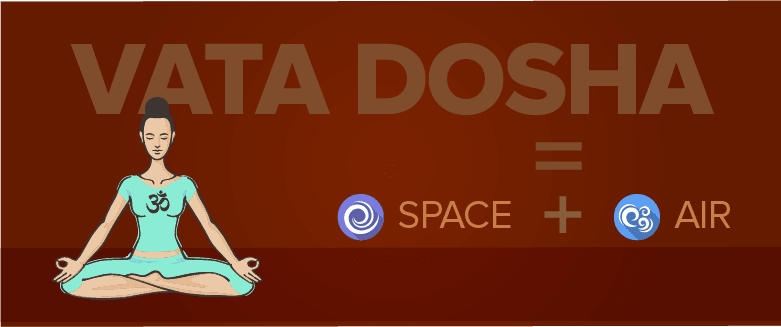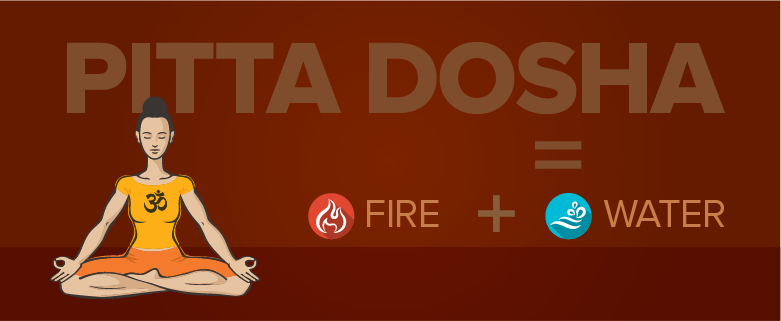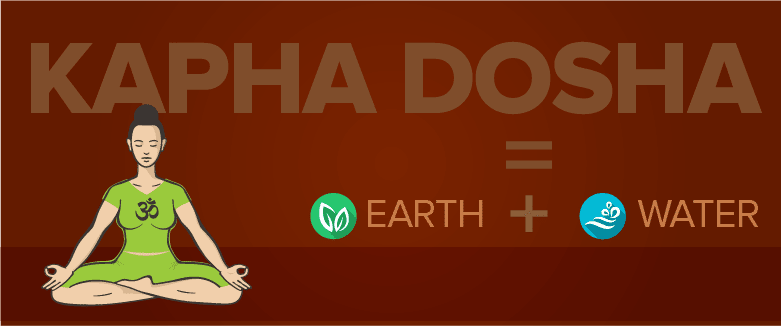
An Introduction To Ayurveda – The Concept Of Prakruti
WHAT IS AYURVEDA?
The word ‘Ayurveda’ is derived from the Sanskrit words – ‘Ayuh’, meaning life and ‘Veda’, meaning knowledge or science. In essence, Ayurveda translates to the ‘science of life’. This ancient science of healthcare and lifestyle management dates back to the Vedic period in India, over 5000 years ago.
What makes Ayurveda a timeless healing system is also what sets it apart from modern medicine – it recognizes that every individual has a unique constitution, and therefore, may not always benefit from a one-size-fits-all healthcare approach.
Through incorporating the wisdom of Ayurveda in your life, you will learn to:
-
Nurture the body’s original state of wellness, the one that nature has blessed us with right from birth
-
Identify physiological, psychological, lifestyle or environmental factors that cause an imbalance in your original state of wellness
-
Focus on personalised lifestyle management and preventive care to eliminate the source, rather than the symptoms
Before we delve deeper into Ayurveda, it’s important to understand how this ancient science interprets the world and defines the unique inherent nature of each living being and every inanimate form. Let’s take a look!
THE 5 ELEMENTS OF NATURE – PANCHAMAHABHUTA

According to Ayurveda, there are 5 elements – Panchamahabhuta – that constitute the building blocks of everything that exists in nature. They are:
Akash or Space/Ether

Akashamahabhuta is the space without which matter cannot exist. The body cavities and channels represent the element of space.
Vayu or Air/Wind

Vayumahabhuta represents the gaseous state of matter which is mobile, volatile and dynamic. In the human body, every motion and movement is a result of the air element.
Agni or Fire

Agnimahabhuta is responsible for the process of biotransformation of energy from one form to the other, such as digestion and metabolism.
Jal or Water

Jalmahabhuta or Aapamahabhuta is the liquid state of matter which represents fluidity, coolness and smoothness. This includes blood, lymph, mucous, saliva and all other bodily fluids.
Prithvi or Earth

Prithvimahabhuta represents the solid state of matter and symbolizes stability, permanence and rigidity. The bones, teeth, cells and tissues that give structure to our body indicate the earth element.
THE 3 BIO-ENERGIES – TRIDOSHA

The combinations of the above 5 elements creates the 3 doshas or bio-energy forces in the body – vata, pitta and kapha.
These 3 doshas are present in different proportions in every individual and the interplay between these doshas is what gives each person their unique physical, physiological, psychological, emotional and social traits – their state of Prakruti.
However, if there is an increase or decrease in the balance of these 3 doshas inherent to you, then it can lead to health issues – a state of Vikruti.

What are the qualities of Vata?

- Dry
- Light
- Cool
- Rough
- Subtle
- Mobile
What does Vata govern in the body?

The flow of breath, muscle and tissue movements, cellular mobility, nerve impulses, sense perception, communication, creativity and consciousness
Vata in balance

- Thin, light frame
- Dry skin and hair
- Cold hands and feet
- Variable appetite
- Agile and active
- Energetic but tire easily
- Creative and flexible mind
- Quick at grasping but quick to forget
Vata out of balance

- Weight loss
- Digestive issues
- Flatulence
- Constipation
- Aching joints
- Weakness
- Mental confusion
- Fear, worry and anxiety
- Restlessness
A famous Vata-predominant personality
Ranveer Singh
After a study of his overall personality, you can connect his restless energy, free spirit, vivacity, creative dressing sense and joyful disposition to a Vata dosha predominance.

What are the qualities of Pitta?

- Hot
- Sharp
- Light
- Liquid
- Spreading
- Oily
What does Pitta govern in the body?

Appetite, digestion, absorption, assimilation, metabolism, body temperature, intelligence, understanding, courage and ambition
Pitta in balance

- Medium height and build
- Soft skin and shiny hair
- Warm hands and feet
- Strong appetite and good digestion
- Energetic
- Direct and outspoken
- Sharp-witted
- Good comprehension
Pitta out of balance

- Indigestion
- Hyperacidity
- Burning sensations
- Excess body heat
- Skin rashes
- Premature greying and hair loss
- Short temper and agitation
- Aggression and anger
- Hatred and jealousy
A famous Pitta-predominant personality
Arnab Goswami
After analysing his overall personality, it’s easy to identify that he is an eloquent orator, knowledgeable, critical, aggressive and highly ambitious, traits that signal a Pitta dosha predominance.

What are the qualities of Kapha?

- Unctuous
- Cool
- Heavy
- Slow
- Smooth
- Soft
- Stable
What does Kapha govern in the body?

Nourishment, hydration, lubrication, fat regulation, growth, regeneration, immunity, strength, stamina, memory, love and compassion
Kapha in balance

- Well-developed, broad build
- Thick, smooth and lustrous skin and hair
- Stable appetite but poor metabolism
- Low mobility
- Excellent strength and stamina
- Sweet-natured
- Calm and tolerant
- Slow comprehension but excellent memory
Kapha out of balance

- Obesity
- Diabetes
- Lethargy
- Excessive sleep
- Flu
- Sinus congestion
- Headache
- Water retention
- Possessiveness and greed
- Stubbornness
A famous Kapha-predominant personality
Deepika Padukone
After considering her overall personality, it’s easy to see that she is soft-spoken, caring and grounded, and has a well-developed physical frame and excellent stamina, indicative of a Kapha dosha predominance.
Do you want to find out which famous personality you share your dominant dosha with?
Find Out Your Dominant Dosha
THE 7 AYURVEDIC CONSTITUTIONS – PRAKRUTI
The concept of Prakruti in Ayurveda is defined as the combination of the 3 doshas that we are born with, which is our true innate nature or original state of wellness. The different proportions of the doshas in the body manifests as 7 Prakruti states or Ayurvedic constitutions. They are:
1
Vata-Type Prakruti Dominant vata dosha with a lesser proportion of pitta and kapha
2
Pitta-Type Prakruti Dominant pitta dosha with a lesser proportion of vata and kapha
3
Kapha-Type Prakruti Dominant kapha dosha with a lesser proportion of pitta and vata
4
Vata-Pitta Prakruti OR Pitta-Vata Prakruti Higher tendency of vata and pitta dosha with a low proportion of kapha
5
Pitta-Kapha Prakruti OR Kapha-Pitta Prakruti Higher tendency of pitta and kapha dosha with a low proportion of vata
6
Kapha-Vata Prakruti OR Vata-Kapha Prakruti Higher tendency of kapha and vata dosha with a low proportion of pitta
7
Tridoshic Prakruti OR Vata-Pitta-Kapha Prakruti Equal ratios of all 3 doshas in the body
UNDERSTANDING YOUR PRAKRUTI AND VIKRUTI

Prakruti is derived from the Sanskrit pre-fix ‘Pra’, meaning ‘Original’ and ‘Kruti’, meaning ‘Creation’. Therefore, a person’s Prakruti is their original, healthiest, balanced state of wellness at the moment of their creation. Your Prakruti is decided at conception and remains the same throughout your lifetime.
In Ayurveda, understanding your Prakruti is the first step towards achieving health and wellness. Your Prakruti renders your physical build, physiological processes and behavioural traits as well as your susceptibilities towards health imbalances, diseases and disorders.
This knowledge of yourself will allow you to align your diet, exercise regime, sleep schedule and daily routine to your unique Prakruti and maintain your original state of balanced health and happiness.
Identify your original, balanced constitution by taking our 10-minute Prakruti questionnaire here.
Once you get to know your constitution, you will get an idea of the proportion of the 3 doshas within your body. However, this ratio of doshas can increase or decrease over time as a result of changes in your lifestyle, the climate, the seasons or with age. Any disturbance in the original balance of the doshas gives rise to the symptoms of disease or a state of Vikruti.
Vikruti is derived from the Sanskrit words ‘Vi’, meaning ‘After’ and ‘Kruti’, meaning ‘Creation’. As such, Vikruti is the acquired, imbalanced state of health that most of us find ourselves in, owing to a current, unhealthy lifestyle or external environmental factors.
Ayurveda helps us identify the difference between our original, balanced state of wellness and acquired, disturbed state of health, and effectively rectify the imbalances through personalised healthcare management.
If you’d like to know more about your original Prakruti and acquired Vikruti, you can consult a certified Ayurvedic Vaidya. Our team at Mi.Bo.So., consisting of Ayurvedic vaidyas, nutritionists and yoga coaches, is here to guide you. Our Ayurvedic consultation package will include a personalised daily routine that addresses your diet, exercise, yoga and meditation, stress management, and sleep schedule. By correcting the imbalanced dosha ratio in your body, it’s easy to come back to your original, healthiest, balanced Prakruti and rediscover optimal wellness.
Have any queries? Feel free to leave a comment below and we’ll get back to you!





4 Comments
Chinmayi Paranjape
How can Pitta dosha be balanced?
ReplyThe Pitta dosha imbalance can be managed through a combination of lifestyle changes and consulting a vaidya. You could take the Pitta Dosha diet.
A normal Pitta Dosha diet includes:
Fruits like apples, berries, apricots, cherries, dates & more. Avoid Corn, buckwheat, fermented products,sour products like pickles etc, yeasted bread, polenta & more.
Avoid Bay leaf, garlic, hing, mustard seeds, salt, sage & more.
Our team of Vaidyas are here to help you in every step with a personalised treatment regime designed uniquely for you.
Sayali
Can the Vikriti doshas be balanced?
ReplyHello, yes, the doshas you have can be balanced by personalised guidance through our Ayurvedic Vaidyas. The concept of Prakruti in Ayurveda is a person's original state of wellness. Once you know your Prakruti, balancing the Vikriti doshas becomes easy.
Our certified Vaidyas will guide you with a personalised treatment regime that focuses on your lifestyle habits, your physical and psychological factors. Focus on personalised lifestyle management and preventive care to eliminate the source, rather than the symptoms
Thank you. Your comment will be visible after an approval.
Add your comment